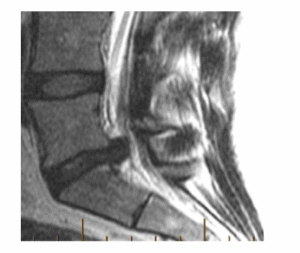


What is a disc herniation?
A spinal disc is like a jelly doughnut with a soft center called the nucleus pulposus and a tougher outer layer called the annulus. A disc herniation occurs when the soft center of a disc pushes through a crack or tear in the annulus, often putting pressure on nearby spinal nerves.
Causes
A disc can be injured with trauma or worn out over time, causing the annulus to weaken. When the soft nucleus of the disc protrudes through the injured or degenerated annulus, this puts pressure on the nearby spinal cord and nerves.
Symptoms
Most patients experience low back pain and leg pain, numbness, or tingling. Symptoms are often worse with sitting and positions that load pressure on the disc (like coughing, sneezing, bending, and lifting) tend to aggravate symptoms.
Treatments
If conservative treatment with physical therapy and epidural steroid injections fails to improve pain, surgical treatment may be indicated. One of the most effective surgical techniques is a minimally invasive laser endoscopic spine surgery.
How does a laser treat the disc herniation?
In addition to mechanically removing disc fragments with graspers, this disc material can be vaporized with the laser. To learn more about laser endoscopic spine surgery, visit MIS-COE.org or click here for an informational packet and here for examples of actual surgeries on our YouTube page.

